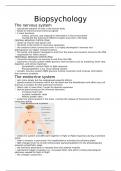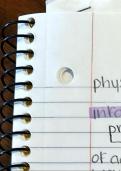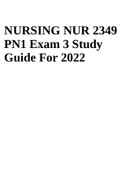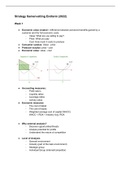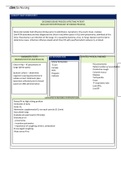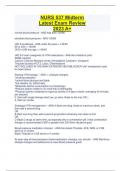Summary
Summary AQA psychology A-level biopsychology notes
- Module
- Biopsychology
- Institution
- AQA
These notes contain all the AO1 and AO3 needed for the biopsychology module of AQA A level psychology paper 2. The information is split up into AO1, meaning the knowledge points the specification looks for, and AO3, wherein each point is a strength or a weakness related to the provided knowledge. T...
[Show more]
